Croton, or Codiaeum variegatum, is a tropical plant that is native to Indonesia. The plant has large, glossy leaves that are brightly colored. The plant is often used as an ornamental plant in homes and gardens. Croton is a relatively easy plant to care for, but there are a few things to keep in mind when watering it. Here are 8 golden rules for watering your croton.
Factors That Impact Watering Croton Frequency
Croton, like all plants, need water to survive. The amount of water a croton needs will depend on a number of factors, including the type of croton, the climate, and the time of year.
The type of croton will impact watering frequency because some varieties are more drought-tolerant than others. For example, the Croton capitatus is a drought-tolerant variety that can go weeks without water, while the Croton flavens is a more delicate variety that needs to be watered more frequently.
In hot, dry climates, crotons will need to be watered more often than in cooler, wetter climates. And, in general, crotons will need to be watered more in the summer than in the winter. The climate also plays a role in how often a croton needs to be watered.
Crotons need less water when they are dormant in the winter and more water when they are actively growing in the spring and summer. Finally, the time of year will also affect watering frequency.
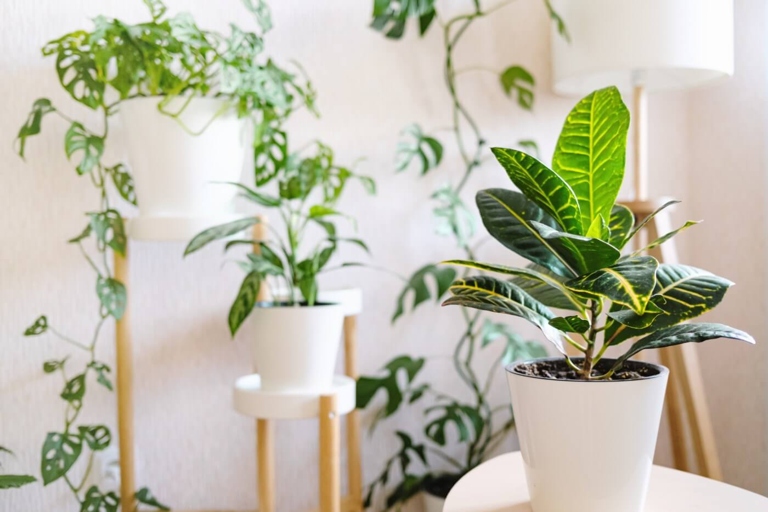
By taking all of these factors into account, you can determine how often to water your croton to keep it healthy and happy.
Size of Your Croton Plant
Smaller plants will need to be watered more often than larger plants. The size of your croton plant will determine how often you need to water it. Croton plants come in a wide range of sizes, from small tabletop varieties to large floor plants.
Here are a few things to keep in mind when watering your croton plant:
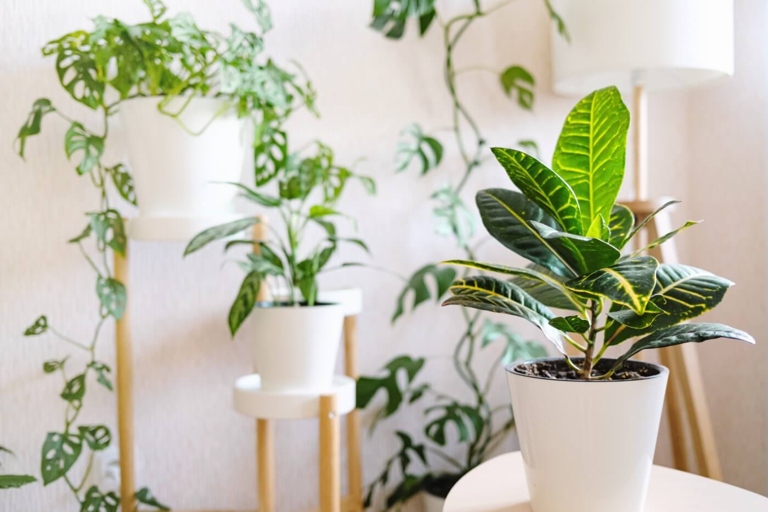
Smaller plants will need to be watered more often than larger plants. -The size of the plant will determine how often it needs to be watered.
-The type of potting mix you use will also affect how often you need to water your croton plant. A well-draining mix will need to be watered more often than a heavy, clay-based mix.
-Your croton plant will also need more water if it is growing in a sunny location.
-Finally, the time of year will also affect how often you need to water your croton plant. During the active growing season, your plant will need to be watered more often than during the dormant winter months.
Temperature
If the temperature is too cold, the water will freeze and damage the roots. The ideal temperature for watering croton is between 60 and 70 degrees Fahrenheit. If the temperature is too hot, the water will evaporate before it has a chance to reach the roots. Temperature is one of the most important factors in watering your croton.
Humidity
If your croton is in a low humidity environment, you will need to water it more frequently. Conversely, if your croton is in a high humidity environment, you will need to water it less frequently. While there are many factors to consider when watering your croton, humidity is an important one.
Here are a few tips for watering your croton based on humidity:
-If the air is dry, water your croton more often.
-If the air is humid, water your croton less often.
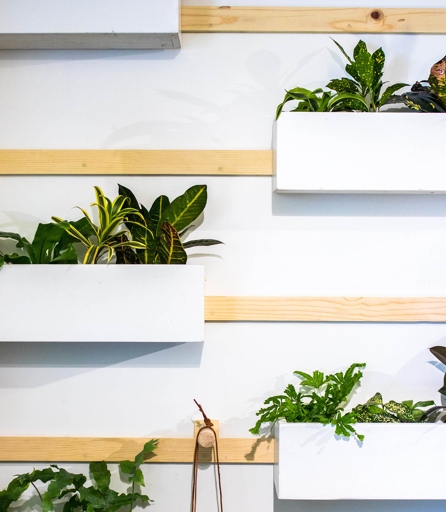
-If you are not sure, err on the side of watering your croton more often rather than less often.
By taking humidity into account when watering your croton, you can help ensure that it stays healthy and happy.
Type and Size of Container
A small pot will dry out quickly, so it’s important to water more frequently. When it comes to watering your croton, the type and size of container you use is important. A larger pot will hold more moisture, so you can water less often.
It’s also important to consider the material of your pot. A porous material like clay will dry out more quickly than a non-porous material like plastic. If you’re using a clay pot, you may need to water more frequently.
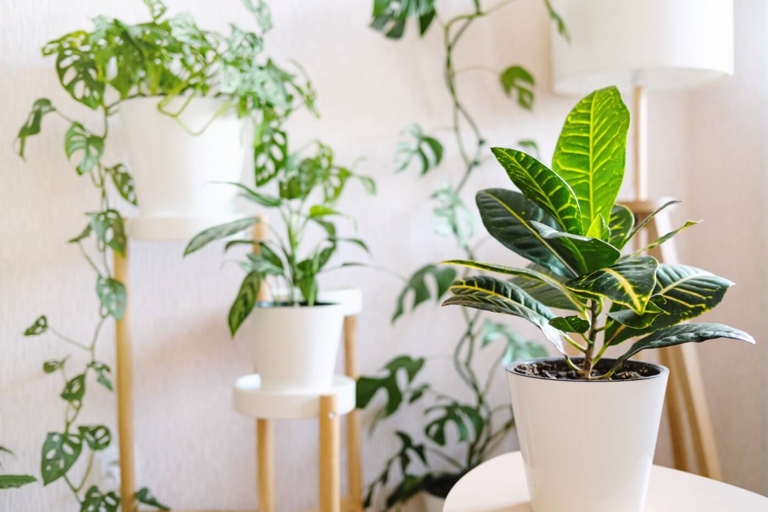
The bottom line is that you should water your croton when the soil is dry to the touch. If you’re not sure, it’s better to err on the side of too much water than too little.
Location of the Plant
When grown indoors, they need bright, indirect sunlight and consistent moisture. The soil should be well-draining, and the pot should have a drainage hole to prevent the roots from sitting in water. Croton plants are native to the tropical regions of Asia, so they thrive in warm, humid environments.
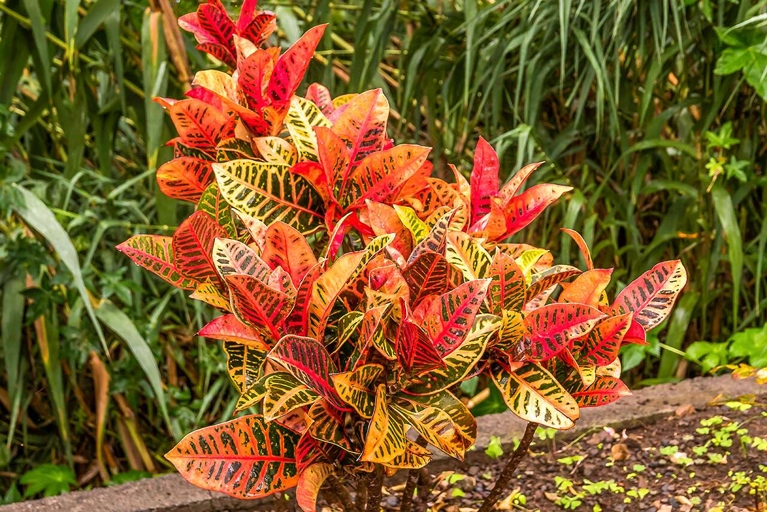
First and foremost, they need bright, indirect light. Croton plants are relatively easy to care for, but they do have a few specific needs. The soil should be well-draining, and the pot should have a drainage hole to prevent the roots from sitting in water. They will also do best in a warm, humid environment.
Type of Potting Mix
Another option is a soil-based mix, which is heavier and holds moisture better. When it comes to potting mix, there are a few different types that can be used for croton plants. Whichever type of mix you choose, be sure to water it regularly and fertilize it monthly to keep your croton plant healthy and happy. The most popular type is a peat-based mix, which is lightweight and well-draining.
The Season
If the soil is dry, it’s time to water your plant. The best way to tell if your croton needs water is to check the soil. There are a few other things to keep in mind when watering your croton: In the spring and summer, when the weather is warm and the days are longer, your croton will need to be watered more often than in the fall and winter. When it comes to watering your croton, the season plays a big role in how often you should water your plant. If the soil is wet, you can wait a few days before watering again.
– Make sure the water is room temperature. Cold water can shock your plant and cause leaves to drop.
Wet leaves can be a breeding ground for mold and mildew. – Water your plant in the morning so the leaves have time to dry before nightfall.
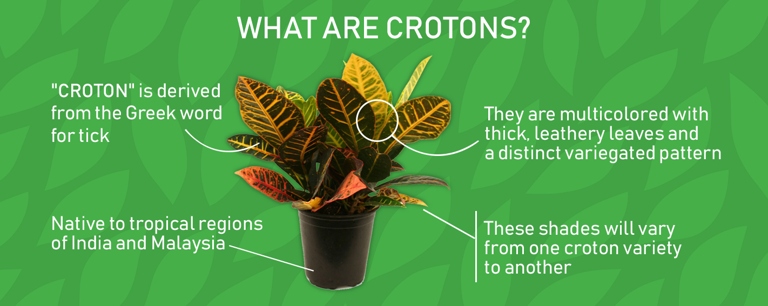
Too much water can lead to root rot, which can kill your plant. – Don’t overwater your plant.
By following these simple watering tips, you can keep your croton healthy and happy all season long.
Air Circulation (Ventilation)
A good rule of thumb is to water your croton plant when the top inch of soil is dry. Good air circulation is key for a healthy croton plant. Make sure to provide plenty of ventilation for your plant, especially if it is growing in a pot.
How to Know When to Water Your Croton
Croton, or Codiaeum variegatum, is a tropical plant that’s native to Indonesia. It’s a popular houseplant because of its colorful leaves, which can be variegated with shades of yellow, orange, red, and green.
While croton is a drought-tolerant plant, it’s important to water it regularly to keep it healthy. Here are a few tips on how to know when to water your croton:
Check the soil before watering. Stick your finger into the soil to see if it’s dry or if it needs watering. 1. Croton likes its soil to be moist, but not soggy.
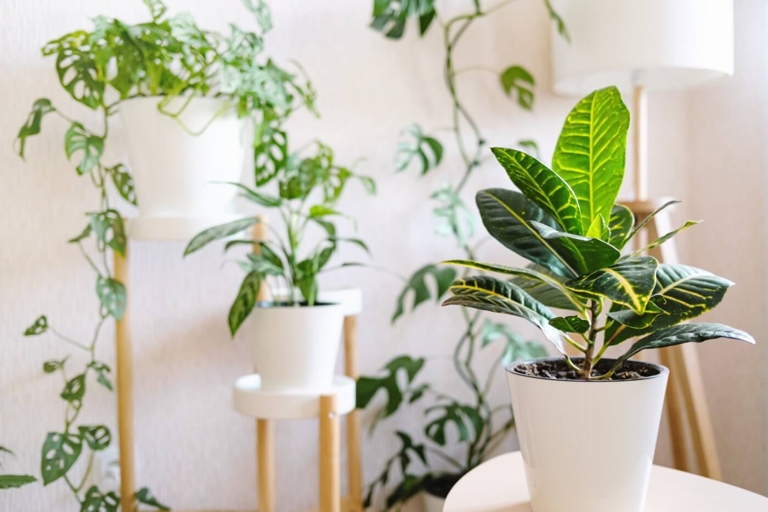
However, watering too often can lead to root rot. Water croton deeply, but not too often. Watering deeply encourages the roots to grow deep into the soil, making the plant more drought-tolerant. 2.
3. If the leaves are drooping or wilting, that’s a sign that the plant needs water. Let the leaves tell you when to water.
Croton does best in warm, humid conditions. If it’s too cold or too hot, the plant will need less water. 4. Be mindful of the temperature.
Check for pests. If your croton is infested with pests, it will likely need more water to stay healthy. 5.
By following these tips, you can keep your croton healthy and happy.
Test Moisture Level Using a Finger or Stick
The best way to do this is to use your finger or a stick to poke into the soil. If the soil is moist, then you can wait to water. If the soil is dry, then it is time to water. When watering your croton, it is important to check the moisture level before adding any water.
Potting Soil Color
When it comes to potting soil, color can be an indicator of quality. For example, black potting soil usually indicates that the soil is rich in organic matter. Brown potting soil usually means that the soil is low in organic matter.
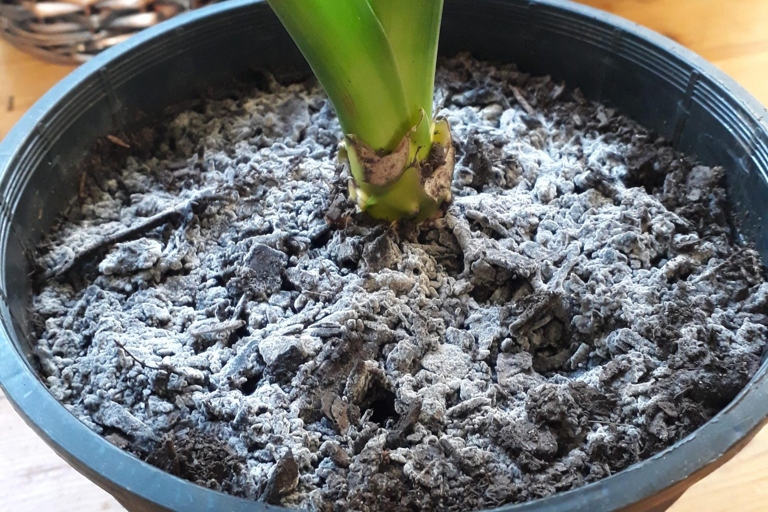
While the color of potting soil may not seem like a big deal, it can actually be a helpful indicator of how healthy your plants are. If you notice that your plants are wilting or that the leaves are turning yellow, it might be a sign that the soil is lacking in nutrients.
If you’re not sure what type of potting soil to use, it’s always a good idea to consult with a gardening expert. They can help you choose the right type of soil for your plants and give you tips on how to care for them.
Leaves Drying Out and Falling Off
However, overwatering can also be a problem, so be sure to check the soil before watering to make sure it is dry. If your croton’s leaves are drying out and falling off, it’s likely that you’re not watering it enough. Crotons need to be watered regularly, about once a week, in order to stay healthy.
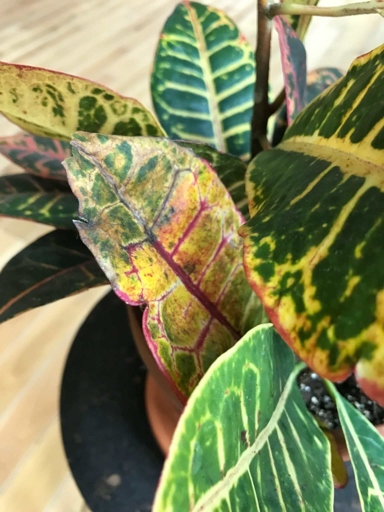
Also, make sure you are using a well-draining pot or planter, as crotons cannot tolerate sitting in wet soil. If you continue to have problems with your croton’s leaves drying out and falling off, consult a plant expert for help. If you think you may be overwatering your croton, try to let the soil dry out more between watering.
Limp and Drooping Leaves
Limp and drooping leaves are a common problem with Croton plants. If it is, move it to a shadier spot. There are a few things that can cause this, including underwatering, overwatering, or too much sun. If the soil is wet, check to see if the plant is getting too much sun. If it is, water the plant and see if it perks up. If you see your Croton plant starting to droop, check the soil to see if it is dry.
Wrinkling Leaves
If you see either of these signs, increase the frequency of watering until the leaves return to normal. Be sure to check the soil before watering to make sure it is dry; overwatering can also lead to leaf drop. leaves may also begin to drop if the plant is not getting enough water. If you notice your Croton’s leaves beginning to wrinkle, it is an indication that the plant is not receiving enough water.
Brown Leaf Tips
The leaves of the croton are its most important feature, so it’s important to keep them healthy and hydrated. If you notice brown leaf tips on your croton, it’s a sign that the plant is not getting enough water. Here are a few tips on how to water your croton:
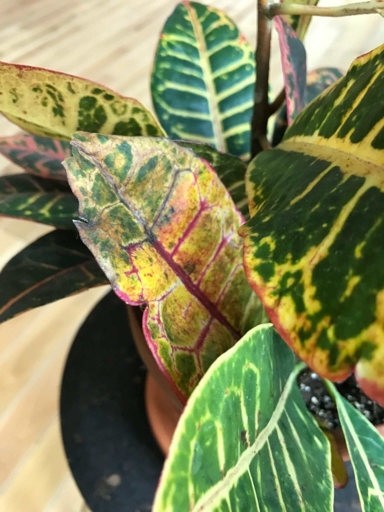
Water your croton once a week, making sure to saturate the soil. 1.
Allow the soil to dry out between watering to prevent root rot. 2.
3. If you notice the leaves starting to droop, water the plant immediately.
4. Always use lukewarm water when watering your croton.
By following these simple tips, you can keep your croton healthy and hydrated, and prevent brown leaf tips.
Leaves Turning Brown/Yellow
Leaves Turning Brown/Yellow
If your Croton’s leaves are turning brown or yellow, it’s likely due to too little water. Water your Croton when the top inch of soil is dry. These tropical plants need to be kept moist, but not soggy. Be sure to empty any water that collects in the saucer beneath the pot.

Brown or yellow leaves can also indicate a nutrient deficiency. If you suspect this is the case, fertilize your Croton with a balanced fertilizer formulated for tropical plants. Follow the directions on the package, applying the fertilizer every two to four weeks.
If you see any of these pests, treat them with an appropriate pesticide. These plants are susceptible to mealybugs, scale, and spider mites. If your Croton is still not looking its best, check for pests.
Measure the Weight of The Pot
When it comes to watering your Croton, one of the most important things to keep in mind is the weight of the pot. This will help you determine how often to water your plant and how much water it will need.
Here are a few things to keep in mind when measuring the weight of your Croton’s pot:
A larger pot will obviously be heavier than a smaller pot. -The size of the pot will affect the weight.
-The type of pot will also affect the weight. A clay pot will be heavier than a plastic pot, for example.
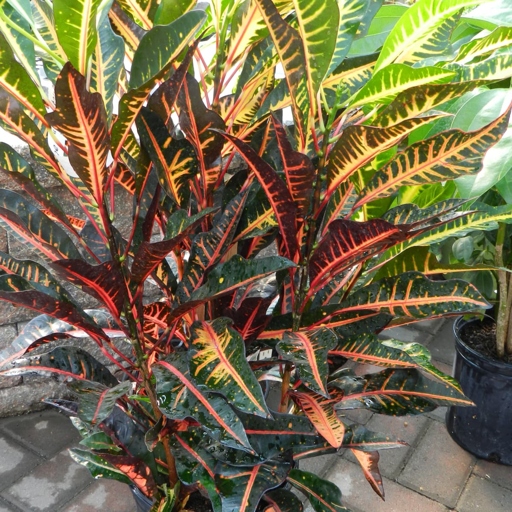
-The material the pot is made out of will also affect the weight. A ceramic pot will be heavier than a plastic pot, for example.
Keep these things in mind when measuring the weight of your Croton’s pot so that you can water it properly.
Use Moisture Meter
By sticking the probe of the moisture meter into the soil, you can quickly and easily check the moisture level of the soil to see if your plant needs watering. When it comes to watering your croton, a moisture meter is a must-have tool.
Here are a few things to keep in mind when using a moisture meter to water your croton:
If the soil is already moist, then your plant does not need watering. 1. Check the moisture level of the soil before watering.
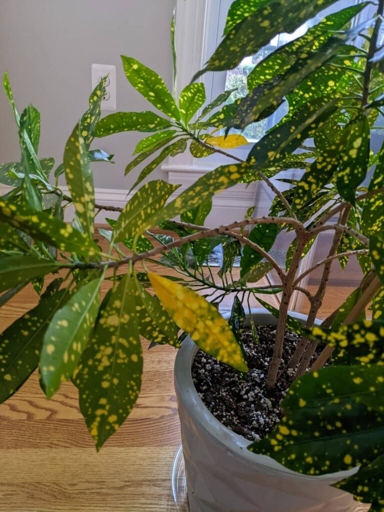
Water your croton deeply, but not too often. However, watering too often can lead to waterlogged soil, which can kill your plant. Watering deeply encourages roots to grow deeper into the soil, making the plant more drought tolerant. 2.
3. Cold water can shock the plant and cause leaf drop. Use lukewarm water when watering your croton.
4. Avoid getting water on the leaves of the plant, as this can encourage fungal diseases.
By following these simple tips, you can ensure that your croton is properly watered and stays healthy and happy.
Signs of Overwatered Croton
Overwatering is the most common cause of death for Croton plants. If the leaves are still wilted and yellow after a few days, you can try trimming off the affected leaves. If your Croton is wilting, yellowing, or dropping leaves, it’s a sign that it’s overwatered. If your Croton is still not looking good, it’s best to get rid of it and start over with a new plant. If you think your Croton is overwatered, stop watering it and let the soil dry out completely.
Here are a few other signs that your Croton is overwatered:
-The leaves are soft and mushy
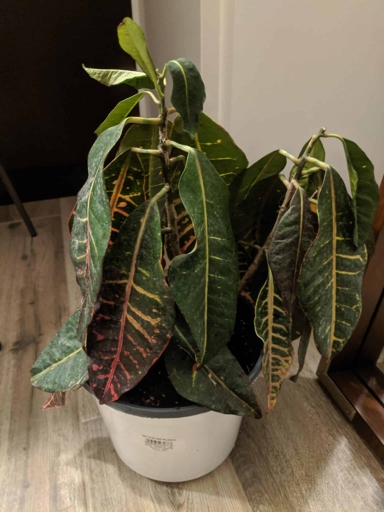
-The leaves are falling off
-The stem is soft and mushy
-The roots are soft and mushy
-There is mold or mildew on the plant
If you see any of these signs, it’s important to take action immediately. The longer you wait, the more damage will be done and the harder it will be to save your Croton.
How to Water Croton
Here are a few tips on how to water your croton: Croton, or Codiaeum variegatum, is a tropical plant that’s known for its vibrant, colorful leaves. While it’s a beautiful plant, it can be a bit finicky when it comes to watering.
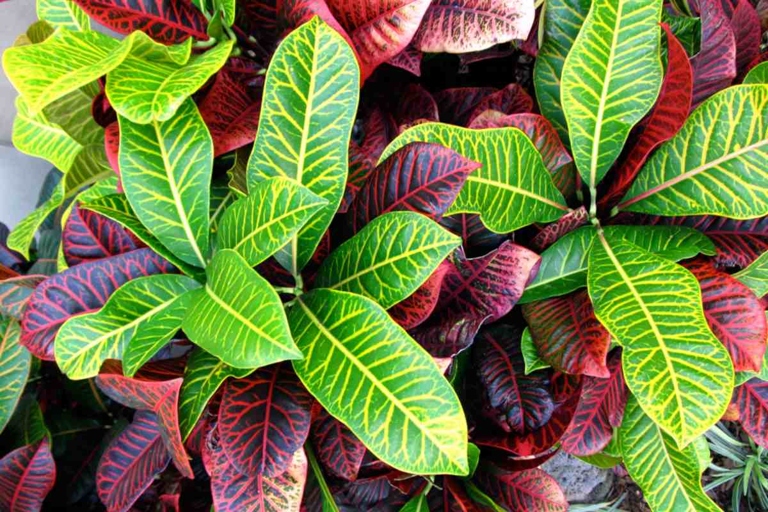
1. Water your croton when the top inch or so of soil is dry.
Water the plant at the base, rather than from above. 2.
Use lukewarm water, as cold water can shock the plant. 3.
4. Allow the plant to drain thoroughly after watering.
5. Reduce watering in the winter months, when the plant is dormant.
By following these simple tips, you can keep your croton healthy and happy.
Watering from Above
Watering from above is the most common and recommended method for watering your croton. This allows the water to evenly saturate the root system and prevents the leaves from getting wet, which can lead to fungal diseases. The frequency of watering will depend on the size of your plant, the potting mix, the weather, and the time of year. A good rule of thumb is to water when the top inch of soil is dry.
Watering from Below
Watering from below is a great way to water your croton without having to worry about overwatering. Simply place your croton in a sink or container of water and let the water soak up from the bottom. This method is especially helpful if you have a busy schedule and can’t always be there to water your plant.
Overwatering can lead to root rot, so it’s important to only water when necessary. There are a few things to keep in mind when watering from below. First, make sure the container you’re using is big enough to accommodate the size of your croton. Second, only water your croton when the soil is dry to the touch.
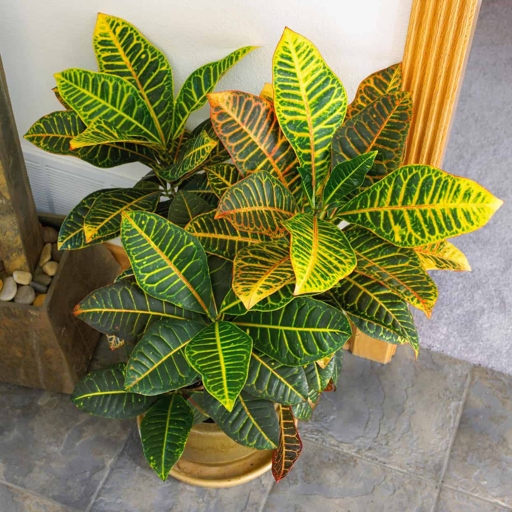
Finally, remember that crotons like to be kept on the drier side. Watering from below is a great way to help keep your croton healthy and happy.
Self-Watering Pots
Self-watering pots are an excellent way to keep your plants healthy and hydrated. Here are a few tips on how to use them:
Make sure to choose a pot that is the appropriate size for your plant. 1.
Fill the reservoir with water and then place your plant in the pot. 2.
3. Be sure to check the reservoir regularly and refill it as needed.
4. When the weather is hot or dry, your plants will need to be watered more frequently.
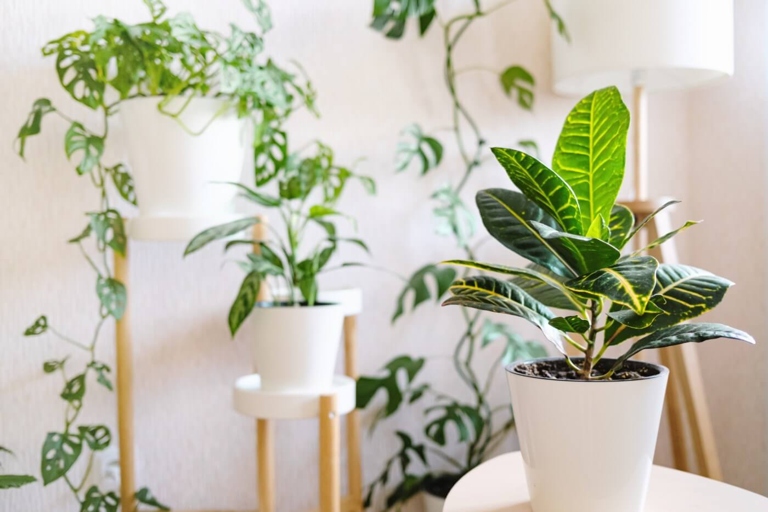
Always empty the reservoir after watering so that the pot doesn’t become overloaded. 5.
If you notice that your plant is wilting, it is likely that it is not getting enough water. 6.
7. Be sure to fertilize your plants regularly to ensure that they are getting the nutrients they need.
When using a self-watering pot, it is important to remember that the plant still needs light and air. 8.
By following these simple tips, you can ensure that your plants will thrive. Self-watering pots are a great way to keep your plants healthy and hydrated.
8 Golden Rules of Watering Croton Plants
If the soil is dry, it’s time to water. If the soil is moist, wait a few days and check again. When it comes to watering your Croton plant, there are a few golden rules to follow. First and foremost, always check the soil before watering.
Watering deeply encourages roots to grow deeper into the soil, making the plant more drought-tolerant. Second, water your Croton plant deeply, but not too often. Watering too often, on the other hand, can lead to root rot.
Cold water can shock the plant and cause leaves to drop. Third, make sure the water you use is at room temperature.
Water on the leaves can lead to fungal diseases. Fourth, use a watering can with a long spout to avoid getting water on the leaves.
Fifth, water in the morning so the leaves have time to dry before nightfall.
Sixth, during the winter months, water your Croton plant less often. The plant will go into semi-dormancy and won’t need as much water.
Use a balanced fertilizer and follow the directions on the package. Seventh, fertilize your Croton plant every few weeks during the growing season.
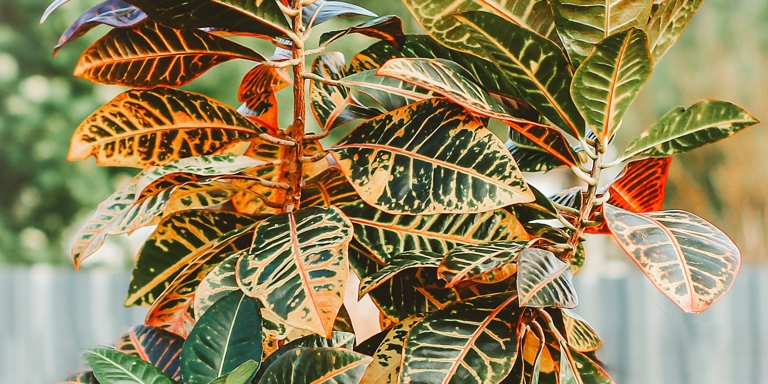
By following these golden rules, you can keep your Croton plant healthy and happy for years to come. If you see any problems, treat them immediately. Finally, don’t forget to monitor your Croton plant for pests and diseases.
Keep the Soil Evenly Moist
When it comes to watering your croton, it is important to keep the soil evenly moist. This means watering the plant when the soil is dry to the touch. However, you don’t want to overwater the plant, as this can lead to root rot. A good rule of thumb is to water the plant every 7-10 days.
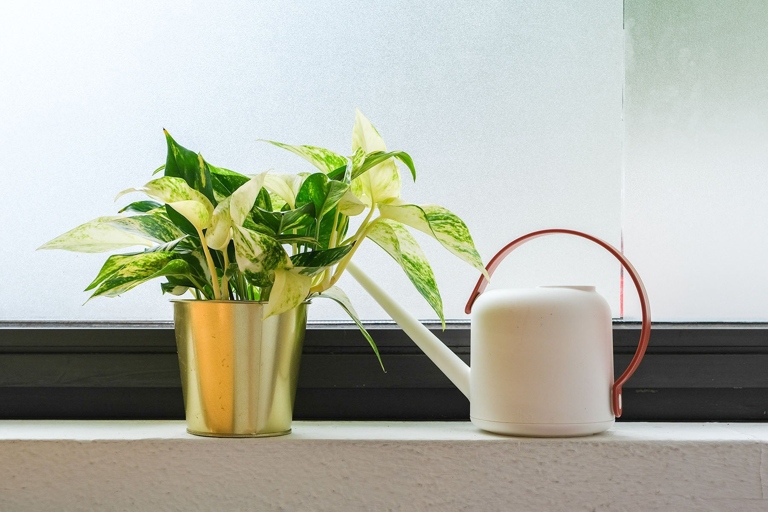
Second, be sure to use lukewarm water, as cold water can shock the plant. First, always water the plant in the morning so that the leaves have time to dry out before nightfall. In addition to keeping the soil evenly moist, there are a few other golden rules to follow when watering your croton. Finally, always water the plant at the base, avoiding getting the leaves wet.
Let the Soil Dry Out Between Watering
Be sure to empty any water that collects in the saucer under the pot. Watering once a week should be sufficient, but be sure to check the soil before watering to see if it’s dry. If the soil is dry, water the plant until the water runs out of the drainage holes. It’s important to let the soil dry out between watering to prevent your Croton from getting root rot.
Drain Excess Water
Allowing your plant to sit in water can lead to root rot, which can be fatal to the plant. If you are growing your croton in a pot, it is important to make sure that you do not allow the plant to sit in water. You can also add a layer of gravel to the bottom of the pot to help with drainage. To avoid this, make sure to drain any excess water from the pot after watering.
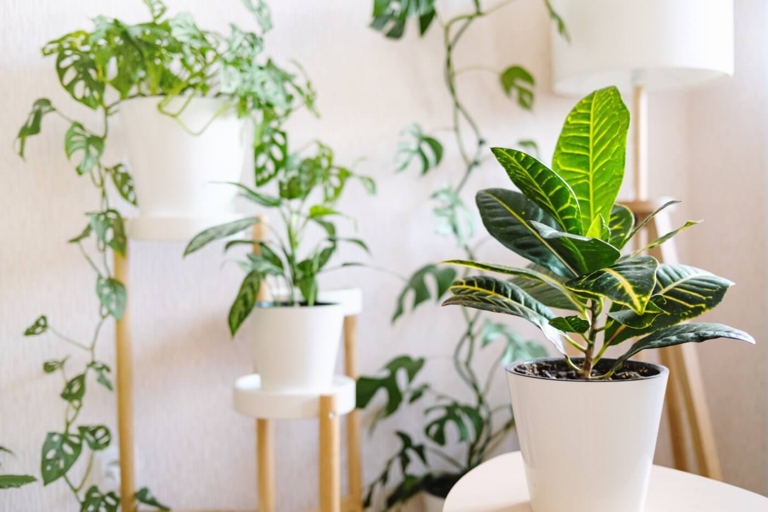
Make sure to check the soil before watering to see if it is dry. If the leaves of your plant start to droop, this is a sign that it needs more water. If it is, water the plant until the soil is moist but not soggy. However, during the hotter months, you may need to water more often. In general, you should water your croton once a week.
Ensure Water Reaches the Roots
Here are a few tips to help you: It’s important to ensure water reaches the roots when watering your croton.
Water your croton deeply and less often. This encourages the roots to grow deep and strong, making the plant more drought-tolerant. 1.
Check the soil before watering. If it’s dry a few inches down, it’s time to water. 2.
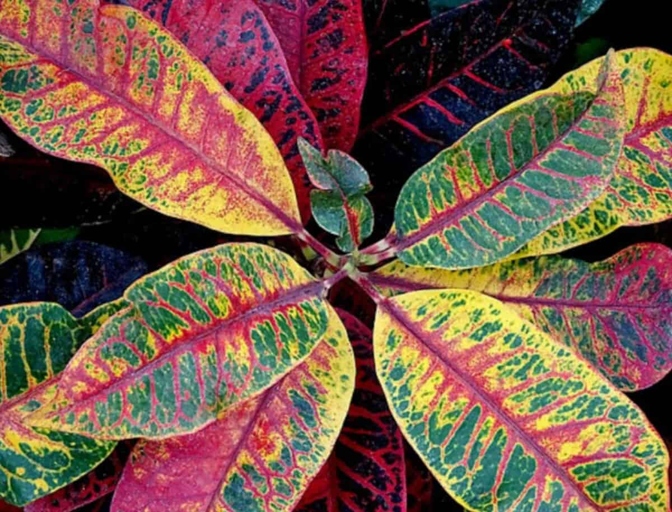
Use a soaker hose or drip irrigation to deliver water directly to the roots. 3.
This helps prevent fungal diseases. Water in the morning so the leaves have time to dry before nightfall. 4.
Apply a layer of mulch around the base of the plant to help retain moisture. 5.
By following these tips, you can be sure your croton gets the water it needs to thrive.
Use Well Drainage Capacity Soil
The best way to achieve this is to use a mix of sand, peat moss, and perlite. Croton plants need well-drained soil to prevent root rot. Be sure to water your croton plant regularly so that the soil does not become too dry. You can also add organic matter to the soil to help with drainage.
Don’t Count Days
When it comes to watering your croton, don’t count the days. Water when the soil is dry to the touch. If it feels dry, it’s time to water. Stick your finger in the soil to check.
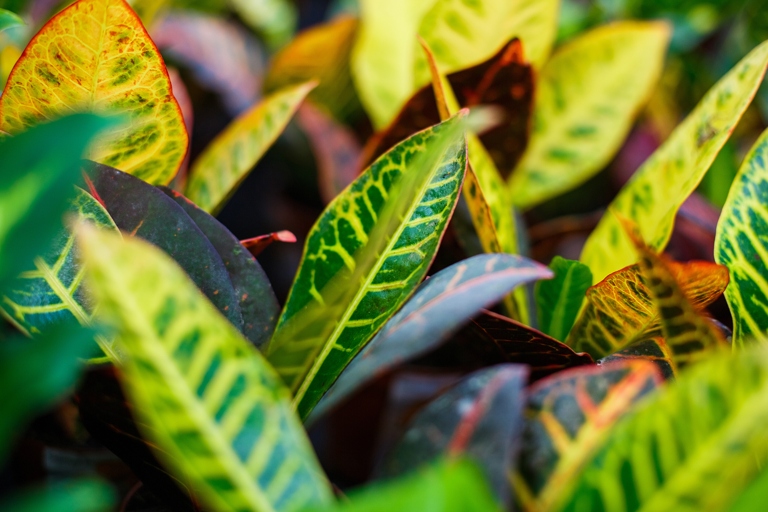
Watering your croton too often will cause the leaves to yellow and drop off. The plant will also become less drought tolerant over time.
Let the soil dry out completely between watering to encourage deep root growth. This will make your croton more resistant to drought and pests.
Follow these simple rules and your croton will thrive.
Avoid Tap Water
They should be watered regularly, but avoid overwatering, which can lead to root rot. Allow the soil to dry out between watering. Croton plants are native to tropical regions and do not tolerate cold temperatures.
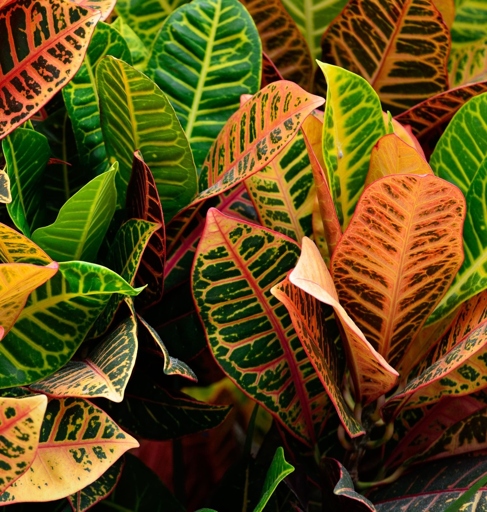
In addition to regular watering, croton plants need high humidity. They will benefit from being placed on a pebble tray or being misted regularly.
Avoid using tap water on croton plants, as it can contain chlorine and other chemicals that can damage the plant. Use filtered or distilled water instead.
Use a Pot with Drainage Holes
This will ensure that your plant gets the water it needs without sitting in water, which can lead to root rot. If you’re wondering how often to water your Croton, the answer is simple: use a pot with drainage holes.
When it comes to watering Croton, there are a few golden rules to follow:
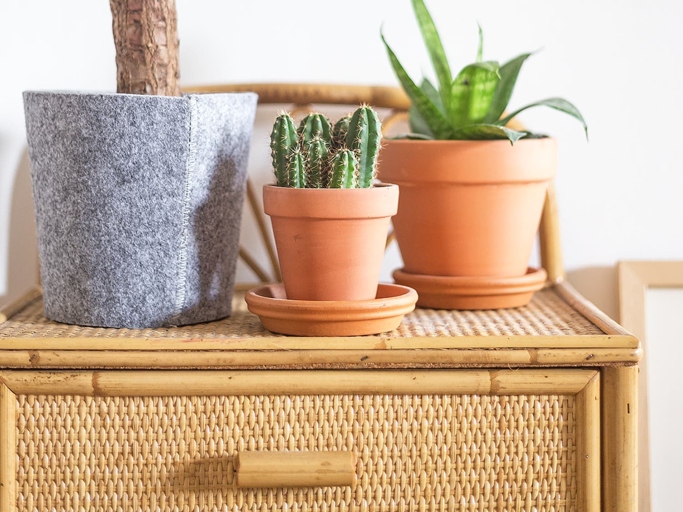
Water your plant when the top inch of soil is dry. 1.
Always use room temperature water. 2.
3. Avoid getting water on the leaves, as this can cause them to rot.
4. If you’re using a watering can, make sure the holes are small enough so that the water can be distributed evenly.
Water in the morning so that the leaves have time to dry before nightfall. 5.
In the summer, you may need to water your Croton more frequently. 6.
7. In the winter, you can reduce watering to once every two weeks.
If you notice that your Croton’s leaves are drooping, that’s a sign that it needs more water. 8.
Watering Crotons After Repotting
They are often grown as houseplants or in greenhouses in temperate climates. Croton plants are native to tropical regions and need warm temperatures and high humidity to thrive. Crotons are known for their colorful leaves, which can be variegated with shades of yellow, orange, red, and green.
Watering once a week should be sufficient, but be sure to check the soil regularly to ensure that it is not too dry. Over-watering can lead to root rot, so be sure to allow the soil to dry out between watering. When you repot a croton, water it well and then allow the soil to dry out slightly before watering again.
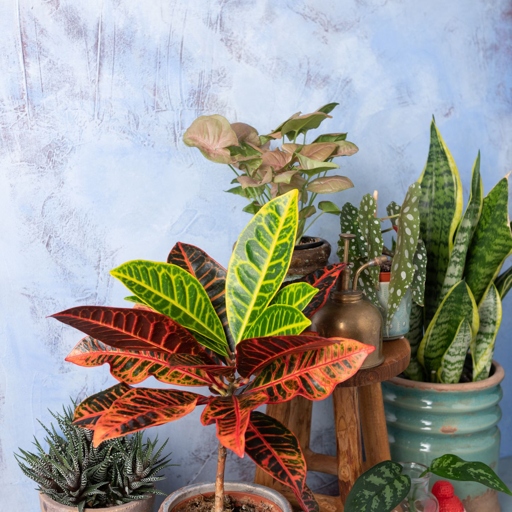
Crotons are not frost-tolerant and will not survive if exposed to freezing temperatures. If you are growing your croton outdoors, be sure to bring it indoors before the first frost.
Frequently Asked Questions
1. How often should I water my croton?
Ideally, you should water your croton once a week. However, during hot weather or when the plant is actively growing, you may need to water more frequently.
2. How can I tell if my croton needs water?
There are a few telltale signs that your croton needs water. The leaves will start to droop and look wilted, the soil will be dry to the touch, and the plant may start to shed leaves.
3. What is the best way to water my croton?
The best way to water your croton is to soak the roots in a bucket of water for about 30 minutes. This will help the plant to absorb water more effectively.
4. What type of water is best for watering my croton?
Croton plants prefer filtered or distilled water. This will help to prevent the build-up of minerals in the soil which can be harmful to the plant.
5. What are some of the golden rules for watering croton?
Here are a few golden rules for watering croton:
– Water your plant early in the day so that the leaves have time to dry before nightfall.
– Avoid getting water on the leaves, as this can encourage fungal growth.
– Be sure to water the roots, not just the leaves.
– Allow the soil to dry out slightly between watering.
– Don’t overwater, as this can lead to root rot.
Final thoughts
If you’re wondering how often to water Croton, the answer is every 7 to 10 days. However, there are a few golden rules to follow:
1. Always check the soil before watering. If it’s dry, it’s time to water.
2. Water in the morning so the leaves have time to dry before nightfall.
3. Don’t let the leaves get too wet or they may rot.
4. Avoid getting water on the leaves in direct sunlight as this can cause scorching.
5. Fertilize regularly to keep your Croton healthy and growing.
6. When repotting, make sure the new pot is only slightly larger than the old one.
7. Don’t over-water or you may drown your plant.
8. And finally, enjoy your Croton!
